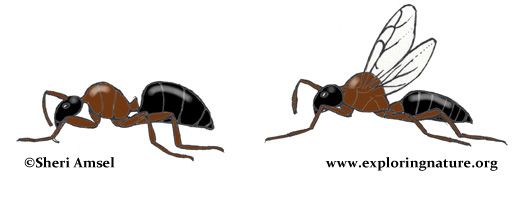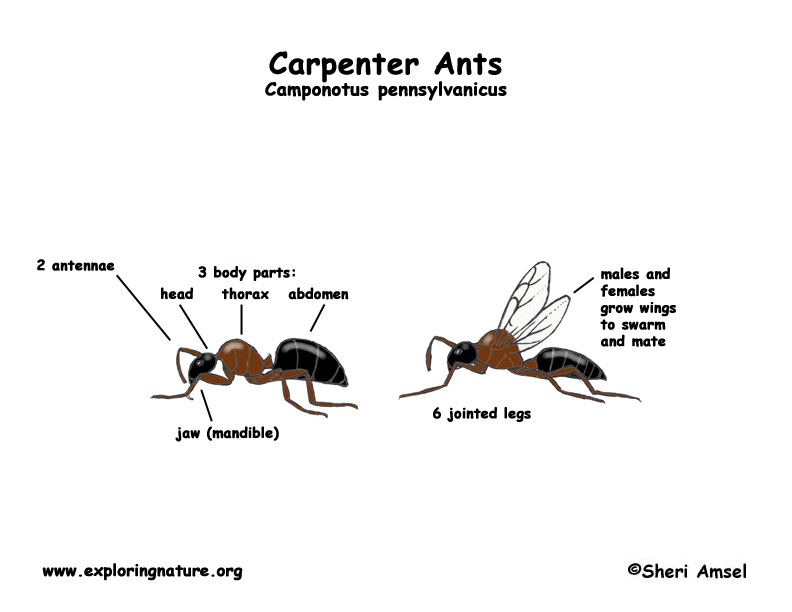

They are found all over the eastern U. S., west to Texas.
They build their nest in wood. They really like wood that is wet.
They are reddish to black in color. Males and females will grow wings to swarm when it is time to expand the nest. They are up to about 1/2" long.
They don’t sting, but when bothered they put out a strong smell. They invade homes and chew into the woodwork. They can cause a lot of damage.
They eat dead insects, live insects, fruit juices and honeydew (a sugary liquid made by other insects like aphids and scales).
They have large nests made up of 1 queen, 2,500 workers, and some males. It takes 3-6 years before they swarm (grow wings and fly away to mate) and make a new nest. They dig tunnels into wood and the underlying ground called galleries, where they nest.
Kingdom: Animalia
Phylum: Arthropoda
Subphylum: Vertebrata
Class: Insecta
Order: Hymenoptera
Family: Formicidae
Genus: Camponotus
Species: C. pennsylvanicus
When you research information you must cite the reference. Citing for websites is different from citing from books, magazines and periodicals. The style of citing shown here is from the MLA Style Citations (Modern Language Association).
When citing a WEBSITE the general format is as follows.
Author Last Name, First Name(s). "Title: Subtitle of Part of Web Page, if appropriate." Title: Subtitle: Section of Page if appropriate. Sponsoring/Publishing Agency, If Given. Additional significant descriptive information. Date of Electronic Publication or other Date, such as Last Updated. Day Month Year of access < URL >.
Amsel, Sheri. "Ants (Carpenter)" Exploring Nature Educational Resource ©2005-2024. December 14, 2024
< http://www.exploringnature.org/db/view/300 >

